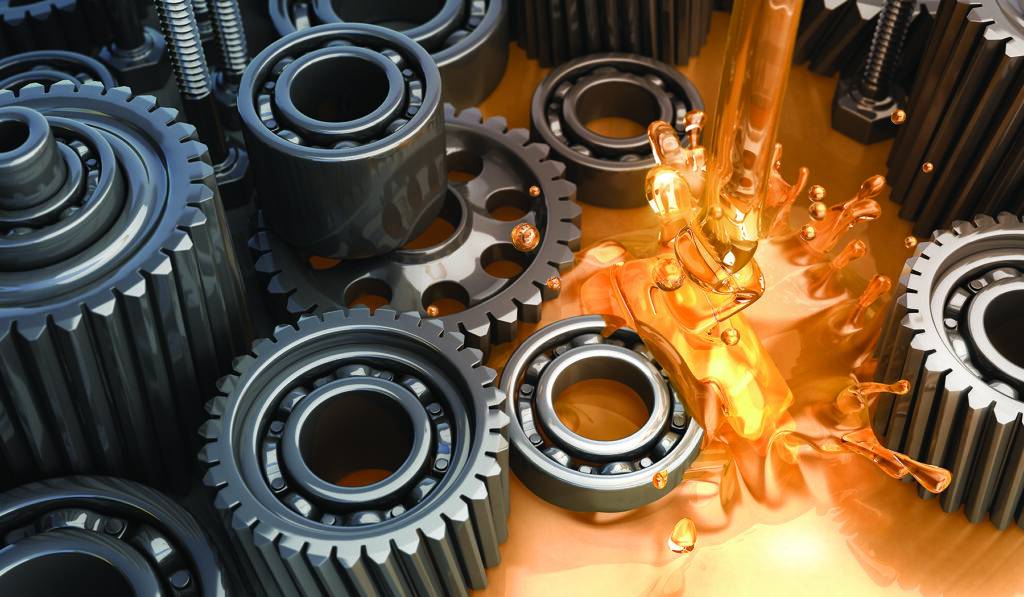
Condition-based lubrication
April 17, 2023 | By Douglas Martin
 Photo: Petrovich9 / iStock / Getty Images Plus
Photo: Petrovich9 / iStock / Getty Images Plus

Photo: Petrovich9 / iStock / Getty Images Plus
When most millwrights are asked about greasing bearing, they answer “I put five shots of grease every six weeks”. Conversely, how often do you change the oil in your car? Typically, every six months or 10,000 kms. These lubrication schedules are both considered “time-based” lubrication or preventative lubrication. The goal is to get fresh grease or oil to the bearing before the existing grease or oil has “reached its useable life”.
Over time, calculations have been developed that allow a user to calculate a “grease-life”, based on how fast the bearing is operating, temperature, and other parameters, based on the applicant and the environment.
The calculation provides a calculated grease life with 99 per cent certainly that the grease will be functional at the time fresh grease is introduced. Therefore, there is a safety factor built into the calculation. It also means there could be an opportunity for improvement in efficiency in terms of less waste.
There have been developments in instruments that allow a user to “listen” to the bearing and quantify the “noise” generated, and in doing so, using this noise level to indicate that the bearing is experiencing metal to metal contact from the bearing needing grease.
One of the methods is the use of an ultra-sonic tool, which, by measuring the amount of sound (in decibels), and if that sound is higher normal, then grease is needed. Grease is added until the decibel level is reduced, and the normal level is reached, or the maximum dose of grease is met.
Another method of condition-based greasing is using traditional vibration analysis tools and focusing on the enveloped acceleration. When the amplitude of the acceleration has increased, grease is added in the same manner, until the level of vibration in that envelope has reduced or the maximum grease dose has been added.
In both cases, if the maximum dose of grease has been added and the noise/acceleration amplitude has not changed, then it is time to further investigate the bearing for possible damage and the early stages of bearing failure.
Advantages and disadvantages
The advantage of condition-based greasing is the bearing is only getting grease when it (apparently) needs it. This certainly means that the amount of grease used can be reduced, and there are cases where the grease consumption has been reduced in half.
I used the word “apparently” because we know that with grease lubrication, the bearing is typically in starvation mode, the amount of oil bled from the grease is minimal. Therefore, the noise level measured is normal, and the issue is the grease being used does not have the appropriate bleed rate for the application.
Another disadvantage is that the lube tech must visit the asset to check and add grease more frequently.
Instead of adding grease the time-based way every six months, the lube tech needs to go to the asset every month, six times more often than the time-based strategy. If using the enveloped acceleration method; however, the vibration readings are already being taken by the vibe techs or the online system, and it is the existing data that can be used to drive the lubrication of the asset.
In terms of monitoring the condition of the oil, besides maintaining the oil level, having basic oil tests done will provide information on the lubricant condition, the level of contamination (and what the contaminants are), and the degree of machine wear that is occurring. In other words, besides getting the data about the oil condition (is the oil itself healthy and clean), you will also gain insight into the health of the machine by seeing the wear particles. Oil testing can drive oil changes and machine maintenance.
When to apply which strategy?
First, there is another lubrication strategy and that is continuous lubrication, which utilizes an automated lubrication system that feeds grease continually into the bearing. Continually means there is a certain amount of grease added to the bearing every day. Either from a slow continuous flow or periodic (for example, once an hour) would depend on the system selected.
With these three strategies, continuous, condition-based, and time-based, there is the decision when to apply them, and which machines to apply them to. To help in this decision, the criticality of each asset must be understood. What happens if this machine goes down? How does it affect the operation? Does it bring production to a halt? How long will it take to replace that asset? What is the cost of that asset being out of service?
From this, the most critical assets should get continuous systems, medium critical assets should get condition-based lubrication and the least critical applications should get time-based lubrication.
Another factor is availability of labour to perform these lubrication practices. Condition-based lubrication may the most labour intensive, but the savings on grease, and the increase in reliability may justify the labour expense.
______________________
Douglas Martin is a heavy-duty machinery engineer based in Vancouver. He specializes in the design of rotating equipment, failure analysis, and lubrication. Reach him at
mro.whats.up.doug@gmail.com.
